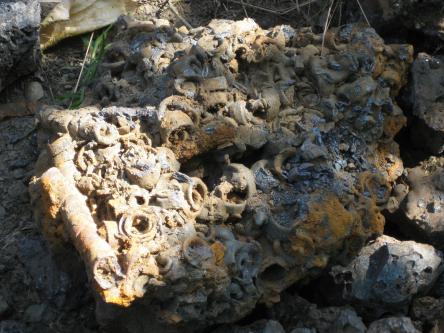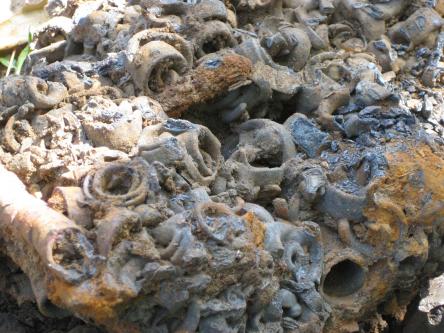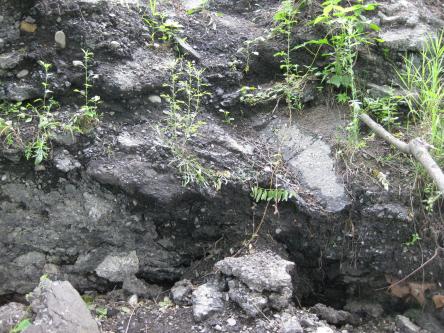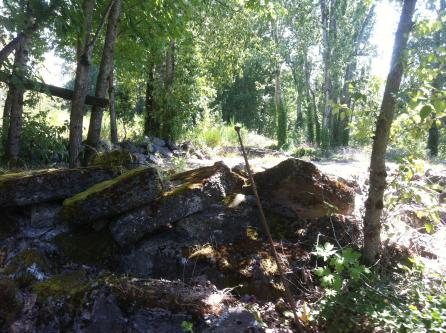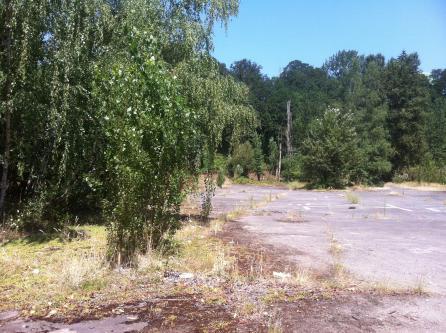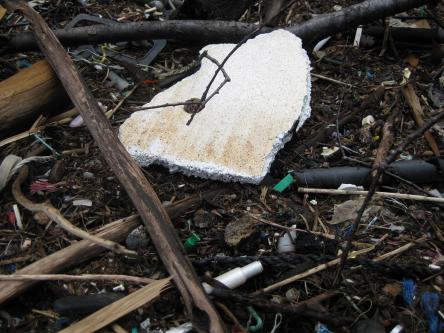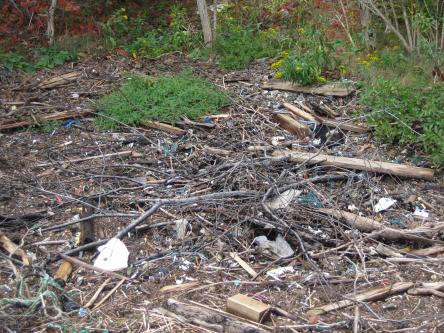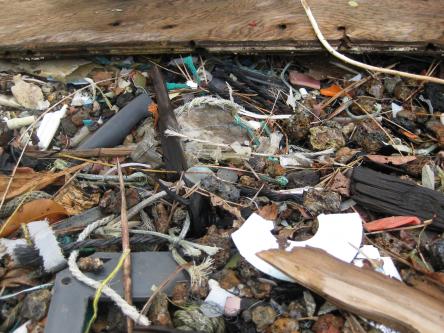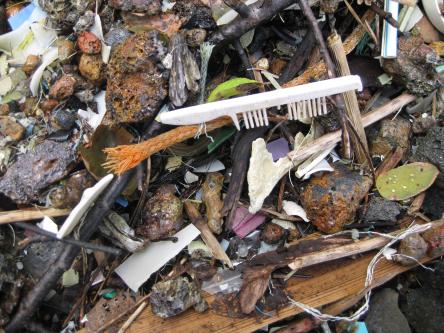Geology of the Anthropocene
I've been making an informal study of how Anthropocenic geological processes- everything from plastiglomerates to weathered pavements - create new biomes, sometimes referred to as anthromes in which distinct processes of botanical succession and faunal colonization occur.
According to Mike Davis in his 2002 Dead Cities: A Natural History:
"Geologists calculate that the fossil energy currently expended in shaping the earth's surface to the needs of an exploding human population of city-dwellers is geomorphologically equivalent–at least in the short run–to the work of the planet's primary tectonic engines: sea-floor spreading and mountain erosion."
The result is that vast areas of the earth's surface are now covered with anthropogenic strata consisting of strange new mineraloids, which, even when we abandon a given locality, have lasting effects on the landscape.
These form the substrate for what are called ruderal or ruin ecologies that grow up in response to the novel thermal, hydrological and chemical conditions created when the built environment starts to decay.
I've been fascinated by how biota interact with these new substances and the habitats they create, such as brownfields, plastic-contaminated littoral zones and abandoned pavements.
Below are some images documenting these processes:
Slide Show:
- Williamette River Mineraloid
- Willamette Mineraloid Close Up
- asphalt strata in Troy NY
- Asphaltic deposit near Troy (detail)
- emergent forest
- pavement colonized by ruderal plants
- Cape Cod beach detritus 1
- Cape Cod beach detritus 2
- Cape Cod beach detritus 3
- Cape Cod beach detritus 4
- Styrofoam in the Cape Cod intertidal zone
projects:
events:
-
Thursday, March 20, 2025 - 12:00 - 13:00
-
Tuesday, April 26, 2022 - 03:30 - 16:30
-
Friday, April 1, 2022 - 18:00 - Monday, April 4, 2022 - 12:00
-
Friday, April 1, 2022 - 09:00 - Sunday, July 31, 2022 - 17:00
-
Wednesday, December 8, 2021 - 21:45 - 22:45
-
Friday, November 5, 2021 - 13:45 - 16:00
-
Tuesday, October 12, 2021 - 13:30 - 14:15
-
Monday, June 28, 2021 - 10:00 - 11:00
-
Thursday, March 19, 2020 - 12:00 - Sunday, March 22, 2020 - 00:00
-
Friday, October 25, 2019 - 21:00 - Sunday, October 27, 2019 - 23:00
-
Thursday, August 1, 2019 - 12:00 - Wednesday, October 2, 2019 - 00:00
-
Friday, April 26, 2019 - 21:30 - Saturday, April 27, 2019 - 00:30
-
Friday, March 29, 2019 - 23:00 - Sunday, March 31, 2019 - 21:00
-
Sunday, June 24, 2018 - 12:00 - Saturday, July 7, 2018 - 22:00
-
Friday, June 22, 2018 - 12:00 - Sunday, September 30, 2018 - 20:00
-
Saturday, June 9, 2018 - 12:00 - 19:00
-
Saturday, May 19, 2018 - 15:00 - Sunday, November 11, 2018 - 22:00
-
Sunday, April 22, 2018 - 13:00 - 23:00
-
Friday, April 13, 2018 - 22:00 - Sunday, April 15, 2018 - 17:00
-
Friday, January 26, 2018 - 09:30 - 11:00
-
Saturday, July 1, 2017 - 03:00 - Sunday, August 27, 2017 - 03:00
-
Friday, May 26, 2017 - 12:00 - Saturday, May 27, 2017 - 15:00
-
Sunday, May 14, 2017 - 13:00 - 17:00
-
Sunday, April 30, 2017 - 20:00 - 22:30
-
Sunday, April 9, 2017 - 18:00 - 20:00
-
Tuesday, November 15, 2016 - 14:00 - 16:00
-
Tuesday, April 12, 2016 - 17:00 - 18:30
-
Tuesday, March 1, 2016 - 12:00 - Monday, June 6, 2016 - 21:00
-
Thursday, February 25, 2016 - 14:15 - 14:30
-
Tuesday, February 16, 2016 - 14:15 - Wednesday, February 17, 2016 - 00:45
-
Wednesday, December 2, 2015 - 22:00 - Sunday, December 6, 2015 - 22:00
-
Saturday, November 21, 2015 - 19:00 - 21:00
-
Friday, September 18, 2015 - 03:00 - Monday, December 7, 2015 - 02:59
-
Saturday, May 16, 2015 - 16:00 - 19:00
-
Friday, April 17, 2015 - 19:00 - Saturday, April 18, 2015 - 22:00
-
Wednesday, February 25, 2015 - 03:00 - Wednesday, March 25, 2015 - 03:00
-
Tuesday, November 11, 2014 - 20:00 - Wednesday, November 12, 2014 - 00:00
-
Monday, September 22, 2014 - 12:00 - Sunday, September 28, 2014 - 02:00
-
Wednesday, July 30, 2014 - 12:00 - Monday, August 4, 2014 - 01:00
-
Tuesday, July 22, 2014 - 13:00 - Friday, July 25, 2014 - 19:00
-
Wednesday, March 19, 2014 - 21:00 - 22:00
-
Saturday, March 15, 2014 - 12:00 - Friday, March 28, 2014 - 12:00
-
Thursday, March 6, 2014 - 19:00 - 21:00
-
Tuesday, February 25, 2014 - 14:00 - 15:15
-
Friday, October 25, 2013 - 11:30 - Saturday, October 26, 2013 - 19:00
-
Saturday, September 28, 2013 - 20:30 - 23:30
-
Monday, September 16, 2013 - 03:00 - Wednesday, September 25, 2013 - 02:59
-
Sunday, May 26, 2013 - 18:00 - 21:00
-
Saturday, May 25, 2013 - 14:00
-
Thursday, May 9, 2013 - 18:00
-
Thursday, February 21, 2013 - 22:00 - Friday, February 22, 2013 - 00:00
-
Thursday, February 7, 2013 - 17:00 - 19:00
-
Tuesday, December 4, 2012 - 22:30
-
Sunday, September 30, 2012 - 21:30 - Monday, October 1, 2012 - 00:00
-
Wednesday, September 26, 2012 - 20:00 - Thursday, September 27, 2012 - 00:00
-
Saturday, August 25, 2012 - 16:00 - 19:00
-
Friday, June 1, 2012 - 14:00 - 16:00
-
Friday, February 17, 2012 - 21:00
-
Thursday, January 26, 2012 - 15:00 - 17:00
-
Friday, November 18, 2011 - 21:30 - Monday, November 21, 2011 - 00:00
-
Sunday, September 18, 2011 - 13:00
-
Saturday, September 17, 2011 - 13:00 - 17:00
-
Saturday, June 25, 2011 - 13:00
-
Thursday, June 23, 2011 - 22:00
-
Wednesday, June 22, 2011 - 22:00
-
Thursday, May 5, 2011 - 22:00
-
Thursday, October 28, 2010 - 22:00 - Friday, October 29, 2010 - 01:00
-
Tuesday, June 1, 2010 - 21:00 - Wednesday, June 2, 2010 - 00:00
-
Friday, April 16, 2010 - 23:00
-
Wednesday, March 31, 2010 - 22:00 - Thursday, April 1, 2010 - 00:00

